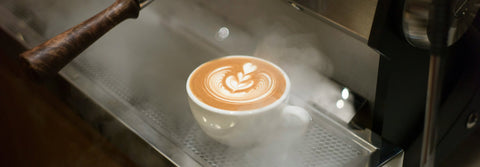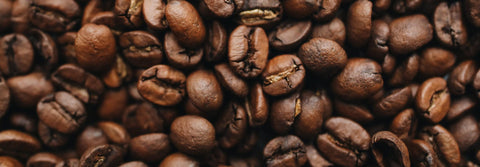
Tips, Techniques, and Tools
Coffee brewing is an art form that requires precision, patience, and a deep appreciation for the nuances of flavour. Whether you're a seasoned coffee connoisseur or just beginning your journey into the world of specialty coffee, mastering the art of brewing is essential for unlocking the full potential of your beans. In this comprehensive guide, we'll explore the various brewing methods, essential tips for brewing success, step-by-step instructions for achieving the perfect cup, and troubleshooting common issues along the way.
Understanding Brewing Methods
From the classic French press to the sophisticated espresso machine, there are countless ways to brew coffee, each with its own unique characteristics and flavour profiles. Understanding the differences between brewing methods is the first step towards discovering your perfect cup.
Essential Brewing Tips
Brewing the perfect cup of coffee requires attention to detail and an understanding of key brewing variables such as water temperature, grind size, and coffee-to-water ratio. To ensure consistent results, start by selecting high-quality coffee beans and storing them properly to preserve freshness.
Step-by-Step Brewing Instructions
Whether you prefer the rich body of a French press or the bright acidity of a pour-over, mastering the art of brewing begins with mastering the basics. In this section, we'll provide detailed step-by-step instructions for each brewing method, including equipment needed and tips for achieving optimal extraction.
FRENCH PRESS:
- Start by measuring out your coffee beans and grinding them to a coarse consistency.
- Add the ground coffee to the French press, followed by hot water (ideally around 93°C).
- Stir the coffee-water mixture gently to ensure all the grounds are fully saturated.
- Place the lid on the French press and let it steep for about 4 minutes.
- After steeping, slowly press down the plunger to separate the grounds from the brewed coffee.
- Pour the freshly brewed coffee into your favorite mug and enjoy!
POUR-OVER:
- Place a paper filter in the pour-over dripper and rinse it with hot water to remove any paper taste.
- Add your freshly ground coffee to the filter, making sure to level the grounds for even extraction.
- Start by pouring a small amount of hot water (just enough to wet the grounds) and allow it to bloom for about 30 seconds.
- Slowly pour the remaining water in a circular motion, making sure to evenly saturate the grounds.
- Continue pouring until you've reached your desired coffee-to-water ratio.
- Allow the coffee to drip through the filter, adjusting your pouring speed as needed to maintain a steady flow.
- Once the coffee has finished dripping, remove the dripper and discard the used filter.
- Pour the freshly brewed coffee into your favorite mug or carafe and savor every sip!
ESPRESSO:
- Preheat your espresso machine and portafilter to ensure optimal brewing temperature.
- Grind your coffee beans to a fine consistency, then dose and tamp the grounds into the portafilter.
- Lock the portafilter into the espresso machine and start the extraction process.
- Watch as rich, velvety espresso flows into your cup, taking note of the crema and aroma. The espresso should flow in as syrup-like consistency, not like water.
- Once the desired volume has been reached, stop the extraction and admire your freshly brewed shot of espresso.
- Serve immediately as a standalone shot or use it as the base for your favorite espresso-based drinks like lattes or cappuccinos.
Troubleshooting Common Issues
Even the most experienced coffee enthusiasts encounter brewing mishaps from time to time. From over-extraction to under-extraction, we'll explore common brewing issues and provide practical solutions for achieving consistent results every time.
OVER-EXTRACTION:
- If your coffee tastes bitter or harsh, it may be over-extracted.
- Try using a coarser grind size or reducing the brewing time to prevent excessive extraction.
- Experiment with adjusting your coffee-to-water ratio to find the perfect balance for your taste preferences.
UNDER-EXTRACTION:
- If your coffee tastes weak or sour, it may be under-extracted.
- Check your grind size – if it's too coarse, the water may pass through the grounds too quickly.
- Ensure that your water temperature is within the optimal range for brewing (around 90-96°C) to extract the full flavor from the coffee.
UNEVEN EXTRACTION:
- Inconsistent brewing can result in uneven extraction, leading to a mix of over-extracted and under-extracted flavors.
- Make sure to evenly distribute the coffee grounds in the filter before brewing, and use a consistent pouring technique to ensure all the grounds are fully saturated.
- Consider investing in a quality coffee grinder with precise grind settings to achieve uniform particle size for more consistent extraction.
Last thoughts
Brewing the perfect cup of coffee is equal parts science and art, requiring a balance of precision, experimentation, and a dash of creativity. Armed with the knowledge and techniques provided in this guide, you'll be well on your way to brewing coffee perfection in the comfort of your own home.
